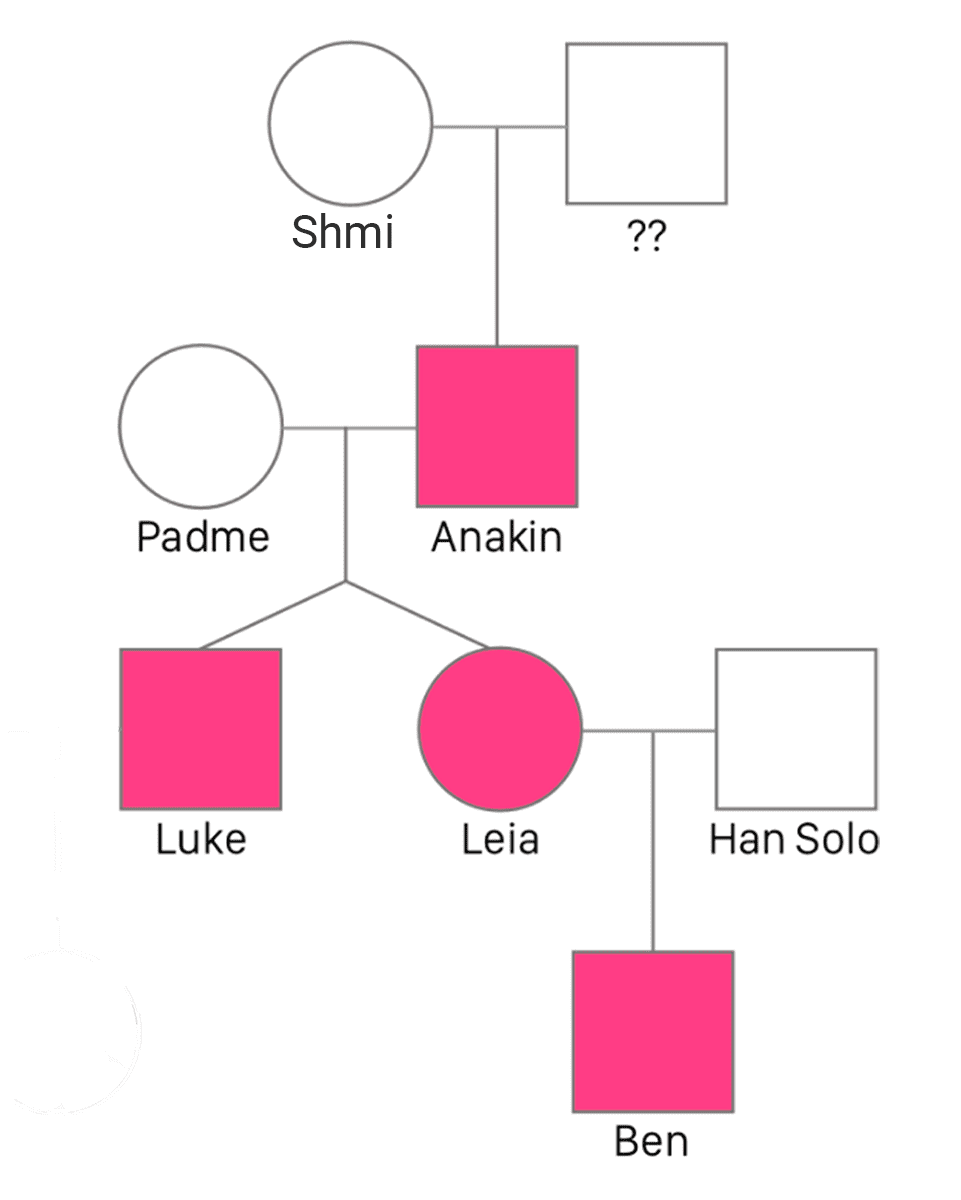Star Wars: Genetic dominance of the Force

Here at Helix, we have some self-proclaimed Star Wars geeks who love to contemplate the mysteries of this galaxy far, far away. The past few years have given us a lot to think about, too: what is the story behind Snoke’s rise to power? Will there be another Star Wars Holiday Special? And how could a person gain the ability to use the Force?
We can’t say much about the first two, but the movies have given us enough information to start speculating about the Force. So, in honor of May the Fourth, we thought we’d pull a Han Solo and take a shot.
Ideally, we would have much more information about other Force users (ahem, Snoke) but luckily there’s a fair amount of information on the Skywalkers and it tells us that DNA may be involved.
Moisture Farms vs. Royalty
To determine whether a trait is heritable in human populations, it’s necessary to distinguish between genetic and environmental influences (how they were raised, stress, diet, and so on). Experiments determine whether a trait is genetic typically look at identical twins raised apart, because they are genetically identical but environmentally different. For the Skywalkers, we don’t have identical twins to compare, but we do have fraternal twins which helps.
Here’s what we know about the Skywalkers: We know that Anakin and Padme Amidala were the parents of the fraternal twins Luke and Leia. Anakin was clearly Force-sensitive, as were many of his descendants: Luke, Leia, and Ben. Luke and Leia grew up on entirely different planets with major physical and socio-economic differences in their upbringing. While Luke was bullseyeing womp rats on the moisture farm, Leia was hanging with galactic rebel royalty. Despite these differences in environment, both of them are still able to use the Force. Combined with their family history, all of this indicates a likely genetic component. But we can take it a step further and say that it’s likely a dominant trait.
“Dominant” means that if you inherit a specific version of a gene from either parent, you will exhibit the traits associated with that gene. In this case, the pattern of inheritance in the Skywalker family suggests that there may be an autosomal dominant gene for the Force-sensitivity trait. “Autosomal” means that the gene is on one of the 22 non-sex chromosomes (meaning, not X or Y) and can be inherited from either parent. If this is right, then there may be different versions of a Force-sensitivity gene—one of which helps you control the Force and is dominant, while other versions don’t. Scientists can track autosomal dominant mutations through families — parents pass them to their kids who pass them onto their kids. In this way, you see the trait in every single generation, just like the Skywalker clan. Anakin passed the Force-sensitive gene to Luke and Leia, who then passed it onto their children (regardless of the apparent lack of Force-sensitivity in both Queen Amidala and that scruffy-looking nerf herder, Han Solo).

Pattern of Force sensitivity in the Skywalker family.
But wait! From what we know, it seems like there’s multiple examples where people—Anakin, Rey, that kid on Canto Bight—are born with Force-sensitivity despite having no family history of it. Does this disprove our theory that it’s an autosomal dominant trait? It actually doesn’t, because it’s possible that they’ve experienced a de novo mutation—a gene variant that is present for the first time in a single individual as a result of a DNA change in the germ cell (egg or sperm) or fertilized egg that gave rise to that individual. The de novo mutation in Anakin would then have been autosomal dominant and passed on through the family as such. So, it seems like the autosomal dominant inheritance pattern does fit the Skywalker family. (There could be other forms of genetic Force inheritance too. Check it out here.)
So on May the Fourth, will the Force be with you? In all likelihood, it depends on your DNA. We can’t help you test your DNA for Force-sensitivity, but there are some other interesting insights that await you.